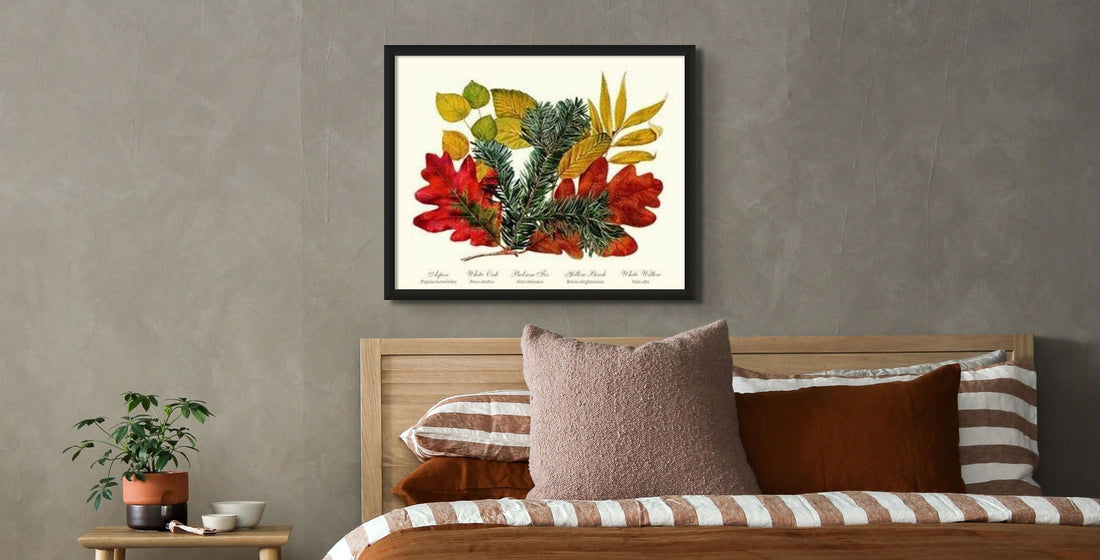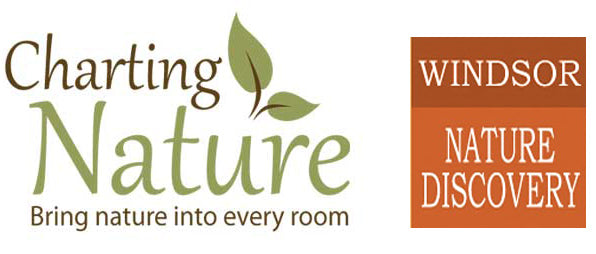
Autumn Foliage
Share
To celebrate the return of fall, we’ve added 8 gorgeous new illustrations to our Trees, Leaves, and Grasses collection.
Aspen, White Oak, Balsam Fir, Yellow Birch, and White Willow
 The Aspen tree is native to several continents, including North America, Asia, and Europe. Its leaves turn a stunning yellow in the fall. White Oak leaves will turn brown in the fall, and pink in the spring. The Balsam Fir, an evergreen, resides in central and eastern Canada and the northeastern region of the United States. Yellow Birch bark is indeed yellow, and so are its leaves when autumn arrives. The White Willow is native to Europe and central Asia. It gets its name from the white underside of its silky, fine leaves.
The Aspen tree is native to several continents, including North America, Asia, and Europe. Its leaves turn a stunning yellow in the fall. White Oak leaves will turn brown in the fall, and pink in the spring. The Balsam Fir, an evergreen, resides in central and eastern Canada and the northeastern region of the United States. Yellow Birch bark is indeed yellow, and so are its leaves when autumn arrives. The White Willow is native to Europe and central Asia. It gets its name from the white underside of its silky, fine leaves.
 Basswood, White Cedar, Flowering Dogwood, Shagbark Hickory
Basswood, White Cedar, Flowering Dogwood, Shagbark Hickory
 Basswood trees, also known as Lindens, grow in temperate areas of the Northern Hemisphere. In Britain, they are referred to as Lime Trees. The White Cedar is fast-growing and drought tolerant and has therefore been introduced to countries throughout the world. In fall, the Flowering Dogwood produces purple leaves and bright red fruit; in spring, pinkish-white flowers appear.
Basswood trees, also known as Lindens, grow in temperate areas of the Northern Hemisphere. In Britain, they are referred to as Lime Trees. The White Cedar is fast-growing and drought tolerant and has therefore been introduced to countries throughout the world. In fall, the Flowering Dogwood produces purple leaves and bright red fruit; in spring, pinkish-white flowers appear.
The Shagbark Hickory produces an edible nut that has a very sweet taste. The nuts are often used in recipes while the bark is used to smoke meats and by the Native Americans to make bows.
Chestnut trees are native to virtually all temperate regions of the Northern Hemisphere. Flowering occurs in late spring or early summer, followed by a crop of edible nuts. Fall foliage is typically a brilliant yellow-orange; Unfortunately, many American Chestnut trees fall victim to chestnut blight caused by the accidental introduction of an Asian bark fungus to North America. To remedy the issue, many organizations are currently trying to breed blight-resistant trees.
The White Maple, also known as the Silver Maple, Creek Maple, River Maple, Silverleaf Maple, Soft Maple, or Water Maple, is native to the eastern half of North America and is widely used as an ornamental tree.
 Between the 18th and mid-20th centuries, Elm trees were the most widely planted ornamental tree in Europe and North America. Starting in the 1960s, the population of Elm trees was almost wiped out by Dutch Elm Disease. The development of disease-resistant cultivars is now allowing some resurgence.
Between the 18th and mid-20th centuries, Elm trees were the most widely planted ornamental tree in Europe and North America. Starting in the 1960s, the population of Elm trees was almost wiped out by Dutch Elm Disease. The development of disease-resistant cultivars is now allowing some resurgence.
The Red Spruce is named for its cones and twigs, which are a glossy red-brown color. The twigs are often boiled in order to make spruce beer.
Beech trees are often used for firewood and in Budweiser beer, and their leaves are occasionally used in salads as a substitute for cabbage.
The White Ash, native to Eastern North America and parts of the south, is difficult to identify as it bears a strong resemblance to the Green Ash. The lower sides of its leaves are lighter than the upper side. The wood is often used in furniture, flooring, and to make baseball bats.
 Hard Maple wood is incredibly heavy, strong, and close-grained so it is often used in flooring, bowling alleys, and furniture. In the fall, the leaves turn from green to a soft yellow, then slowly develop more orange and red hues until they turn a rich burgundy color. This tree is also known as Sugar Maple and Rock Maple and its sap is the source of maple syrup.
Hard Maple wood is incredibly heavy, strong, and close-grained so it is often used in flooring, bowling alleys, and furniture. In the fall, the leaves turn from green to a soft yellow, then slowly develop more orange and red hues until they turn a rich burgundy color. This tree is also known as Sugar Maple and Rock Maple and its sap is the source of maple syrup. The Red Oak, also known as Champion Oak, is native to the northeastern United States and southeastern Canada. It is the state tree of New Jersey and may grow for up to 500 years. The scaly bark’s color is a mixture of grey, red, and brown. In fall, the leaves turn it a rosy pink color.
The Red Oak, also known as Champion Oak, is native to the northeastern United States and southeastern Canada. It is the state tree of New Jersey and may grow for up to 500 years. The scaly bark’s color is a mixture of grey, red, and brown. In fall, the leaves turn it a rosy pink color.
 Tulip Tree, Sweet-Gum, Scarlet Oak The Tulip Tree was given its name for the way its flowers resemble those of tulips; however, it is more closely related to magnolias. The Sweet-Gum produces pink leaves in the fall; in the winter, it bears a prickly seed pod. The hardened sap that seeps from the wounds of the tree can be chewed like gum.
Tulip Tree, Sweet-Gum, Scarlet Oak The Tulip Tree was given its name for the way its flowers resemble those of tulips; however, it is more closely related to magnolias. The Sweet-Gum produces pink leaves in the fall; in the winter, it bears a prickly seed pod. The hardened sap that seeps from the wounds of the tree can be chewed like gum.
The Scarlet Oak is generally planted as an ornamental tree because its leaves turn a deep scarlet color in autumn.
 Red Maple, Tamarack, White Pine The Red Maple is one of the most common deciduous trees in eastern North America. Its flowers, twigs, and seeds are red in color, as are its leaves in the fall. The Tamarack is a species of Larch native to northeastern Canada and the United States. Its cones resemble small roses, and in fall its leaves turn a pinky-yellow.
Red Maple, Tamarack, White Pine The Red Maple is one of the most common deciduous trees in eastern North America. Its flowers, twigs, and seeds are red in color, as are its leaves in the fall. The Tamarack is a species of Larch native to northeastern Canada and the United States. Its cones resemble small roses, and in fall its leaves turn a pinky-yellow.
The White Pine is native to eastern North America; forests of White Pine originally covered much of northeastern North America. To the Haudenosaunee Native Americans it is known as the “tree of peace.” Its cones are long and slender.

